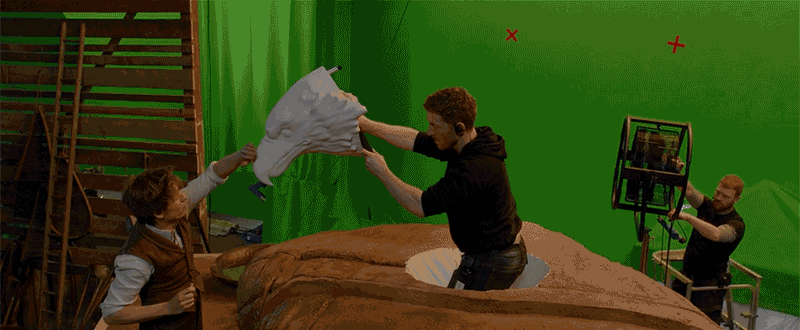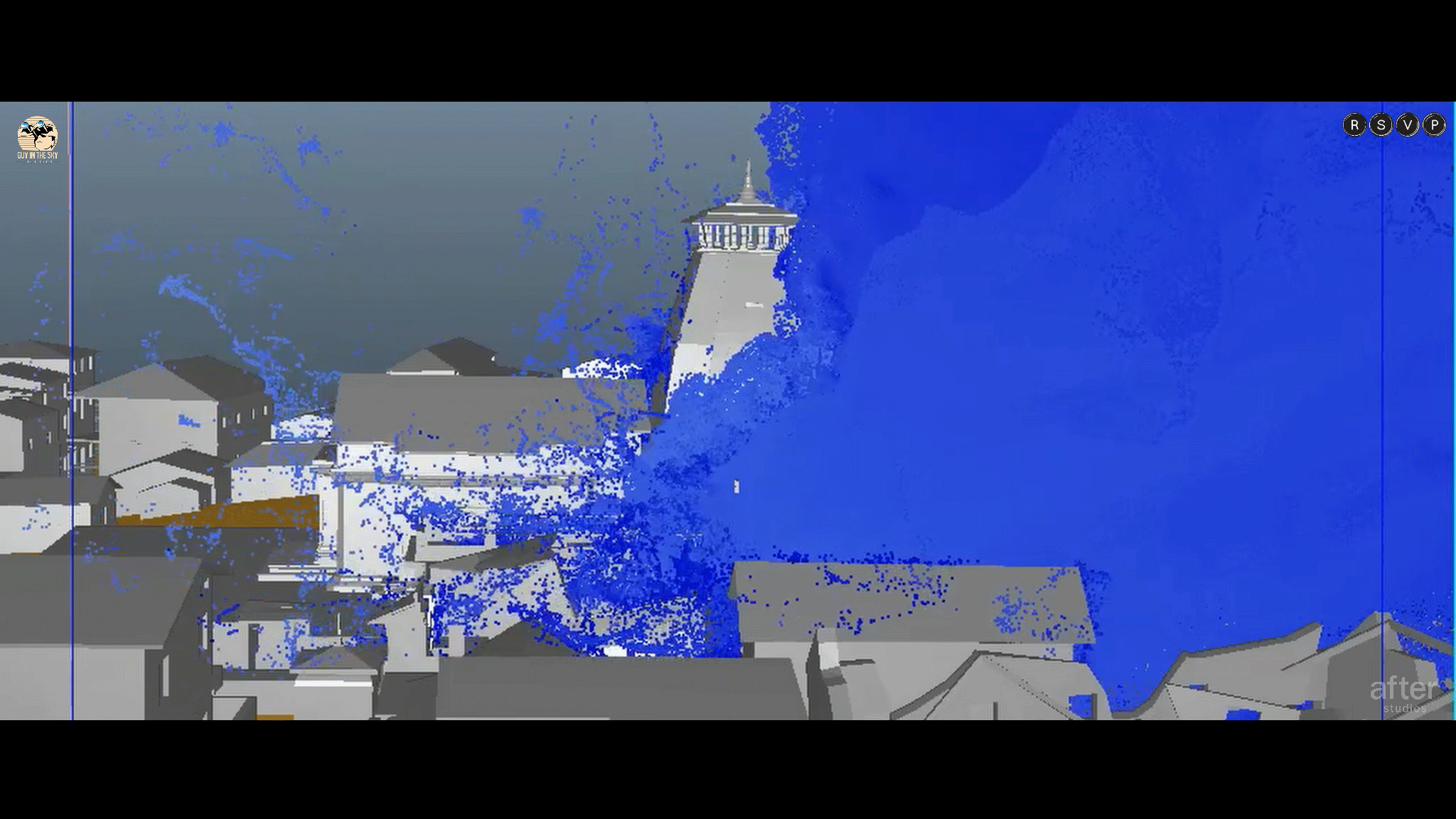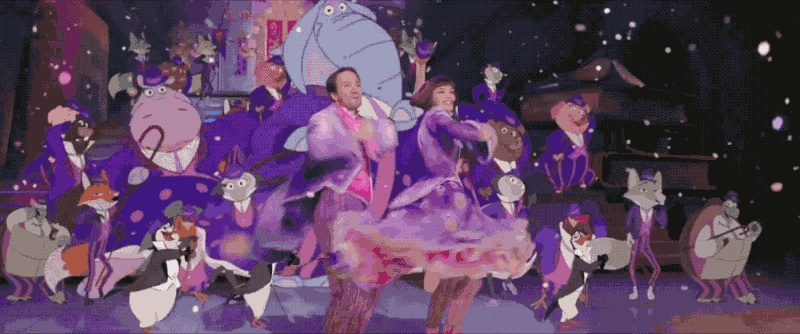The age of investing countless hours in adjusting claymation models are almost gone as modern computing VFX technology has overlapped it. Today VFX plays the key role in amplifying the visuals in content. But when the audience watches the final project it is just that seamless amalgamation of storytelling with the aid of VFX.
Over the years VFX studios from India and abroad have explored different avenues to create content which is out of the box. In creating such content the studios have gone through many hurdles, however, the reflection of the hurdles on the final projects is zilch, that’s the magic of today’s VFX. We have spoken with few studios supervisors to understand more about the challenges faced by VFX studios during the making of some particular project.
MPC: As the Dumbo movie director Tim Burton approached MPC to create concept art and designs for Dumbo’s world, MPC’s VFX artists then started working on the creation of CG characters and animation cycles. Its Character Lab team created several characters, including the film’s protagonist, Dumbo, which took more than a year to develop—although some initial tests at Disney started earlier. From the overall appearance, to how he would physically move, it was both a challenging and creative process. “The main challenge was how to get the balance right between what a real and an idealised elephant looked like. MPC wanted to reference the original cartoon as much as possible while working with more realistic attributes,” said the VFX team. VFX shot for the movie was around 1800, over 90 minutes and MPC was responsible for close to 1200 shots.

In addition to that MPC VFX Supervisor Patrick Ledda said “Firstly, I should say that most of the circus was practically built on set. It was so large that it needed to be split into three different sound stages. This meant that you could never have the entire circus shot through the camera. We, therefore, created a replica of the circus to allow easy digital set extensions. Some parts of the circus such as trees, background tents, and more were never built practically so we had to create CG versions for those. The main creative challenge was the creation of skies. Tim Burton wanted a storybook feel so he wasn’t too keen on over realistic looking skies. He wanted something that was real but expressionistic. We spent a significant amount of time developing this look to match the practical sets which also had an expressionistic feel. Every scene had a different sky, meticulously designed to match the mood of the film.”
When we asked the supervisor about any of these scenes were challenging, he said “Another great sequence was the scene where he is given a bath. This was very complicated technically and creatively. Creating CG foam it’s quite complicated and given that Dumbo had to interact with actors, it created a whole list of challenges. Also, Tim wanted to direct the foam to represent Dumbo’s mood. We ended up using a combination of CG foam and practical foam elements which we shot at MPC.”
Image Engine: Under the Image Engine shadow Fantastic Beasts: The Crimes of Grindelwald is one of the movies which kind of a dream project for Image Engine studio. In delivering large environments, animated creatures, and photoreal CG humans, Image Engine visual effects supervisor Martyn Culpitt and visual effects producer Cara Davies gathered a team of artists fresh off other challenging projects such as Logan, Game of Thrones and Lost in Space and began tackling the New York scenes.

Beginning in August 2017, a crew size of around 130 at Image Engine worked on the opening section of the film for 13 months. “I think it is one of the more complex scenes we’ve tackled here at Image Engine. “It’s an amazing sequence and we’re all really proud,” says Culpitt. In addition to that “We also got to invest a lot of time up-front in development, especially in animation and effects. I feel that really helped the team figure out a lot of the challenges early on in developing ways to provide automatisation of effects. It feels like such a continuous sequence,” adds Davies. A Fantastic Beasts film would not be complete, of course, without some incredible creatures. One of Image Engine’s major challenges for the carriage scene, aside from the flying winged Thestrals, was the quirky six-limbed spiked chupacabra, although initially the studio was only called on to feature it in a few shots. “They loved him so much there’s now 13 shots,” says Culpitt, who points out the character turned into a comic relief in the sequence. “He evolved, too. He used to be orange with stripes, and now he’s black with white and red stripes. He’s quite a fun little guy,” Culpitt added.
After: The VFX of the movie Kedarnath was done by VFX studio After VFX, where the movie VFX has many intricacies since it is around water which is considered a challenge. The visual representation and recreation of the authenticity and reality of Indian ‘pahari’ culture has amused the viewers including the alluring beauty of the valleys, the mountains, the waterfall and the temple. On the other hand, the enthralling VFX of the natural disaster has that real and emotional essence which might remind viewers of the actual time and mishap.

After VFX head Vishwas Savanoor said, “Creation of the flood sequence was the most complicated due to the grandeur of Indian water bodies as far as Kedarnath is considered, also background plates have to be matched to the live locations.” Not only that the VFX representation of the giant wave submerging the Kedarnath temple was also challenging as it reveals how the wave bounces on temple top and subsumes everything. The flow of the water, the temple bounce and the massive splash that submerges everything are visually quite challenging for the studio. The movie has more than 126 shots of water and over 900 shots overall excluding water. The movie contains general VFX shots, the added environment in the background with the inclusion of work from the departments of matte painting, simulation, animation, lighting, colour grading, paint clean up and composition.
Red Chillies.vfx: The movie Zero is one of the VFX-heavy movies for which the VFX was supervised by Red Chillies VFX studio. The work was experimental and fresh where the VFX supervising studio Redchillies.vfx did a remarkable work on shrinking the superstar into a dwarf for the entire duration of the film Zero. There were 2800 VFX shots in the film, however, only 2400 shots made it to the final reel. Red Chillies VFX creative officer and VFX supervisor Harry Hingorani expressed that they knew using a body double and replace with Shah Rukh Khan’s face later will not work because of actor’s popularity and familiarity in the audience.
Hingorani said “ We wanted to ensure that Khan’s mannerism, body language is retained. So it was unanimously decided that Khan would play this role himself, no body double. How do we do this? The biggest challenge was to make sure that the VFX is seamless so that the audiences cannot make out something is different and this way, accepts Khan as a dwarf. This was achieved by the use of blocks (which is also mentioned in the behind the scene by the actor himself). So if you’ve watched Aanand L Rai’s previous movies, they are filled with human emotions and drama. So keeping this theme in mind, we used the block style to make sure the eye-line amongst the actors matched. We constructed one and a half feet perimeter of boxes within which Khan would stand and the other actors would stand on them. Every set we created, we had to keep in mind this process and when it was needed, we would remove the boxes.”

Redchillies.vfx chief operating officer and VFX producer Keitan Yadav said “ Besides creative challenges, we also had the production pipeline to look after. We realized that we had two and a half lakh tasks spread across 2400 shots, and each shot had five plates. This meant multiple elements to be managed in each task. So streamlining the production process was critical. We achieved this by outsourcing our 2D to 3D shots conversions. The studios would work on rotoscope and send it back to Red Chillies vfx. Once we received it, our artists would start the dwarf creation process. It was a huge challenge to coordinate between 58 studios. The process was like this: One studio would deliver certain shots, then Redchillies.vfx would start the process. Then the other VFX aspects like cleanups, environment generation/simulation would be created. A constant and never-ending process with shots coming in and going out.”
Frame Store: Framestore was the lead VFX company for Disney’s Mary Poppins Returns and the studio has delivered 470 sparkling shots across 32,000 frames. One of the film’s magical moments was when real-life heroes – Mary Poppins, lamplighter Jack and the Banks children – are transported to a colourful animated world. The scene features a lively music hall sequence (replete, of course, with dancing penguins) and culminates in a thrilling carriage chase, with the merging of traditional animation and modern VFX a tag-team operation between Framestore’s Montreal team and the animators at Duncan Studios.

VFX Supervisor Christian Kaestner says “Integrating the 2D and 3D universes definitely threw up some challenges. Balancing perspectives and allowing the right amount of modernity to filter into that exquisite hand-drawn world required a great deal of time and thought. The pacing is so dynamic and the choreography so precise that we really had our work cut out when it came to capturing the light, texture, shade and geometry of the scene. Helping bring together the superb direction and choreography, the fantastic performances and Duncan Studios’ artwork for the seated, animated audience was a lot of fun but also a lot of work – for example, we actually recreated the music hall’s stage and lighting rig to get things just right.”
NY Vfxwaala: Under NY Vfxwaala umbrella Simmba is one of the movies which has set a milestone at the box-office and its VFX was one of the reasons as it played a crucial part in its success. The team have worked on more than 1800 VFX shots which comes up to a duration one hour and 43 Mins. The VFX team overcame challenges that they faced during the post-production as they said to us in a candid conversation.
 “The challenges we faced were about the huge amount of set extensions and 3D work which must look similar and match to the original set, we had to do the Lidar 3D scanning of the entire set and create a Virtual Set in Maya in the studio so that all the set extensions look real and seamless,” they said. Apart from that for the Dhobi ghat sequence, the sequence was originally shot at a different location altogether. However “ the challenge was to make it look real, and as the desired output was supposed to exceed the expectations we used a combination of 2D and 3D VFX technology to give it a perfect look as per the director. The technology involves multilayer comping with water and cloth simulation done is software’s like NukeX, Maya and Realflow” said the VFX team.
“The challenges we faced were about the huge amount of set extensions and 3D work which must look similar and match to the original set, we had to do the Lidar 3D scanning of the entire set and create a Virtual Set in Maya in the studio so that all the set extensions look real and seamless,” they said. Apart from that for the Dhobi ghat sequence, the sequence was originally shot at a different location altogether. However “ the challenge was to make it look real, and as the desired output was supposed to exceed the expectations we used a combination of 2D and 3D VFX technology to give it a perfect look as per the director. The technology involves multilayer comping with water and cloth simulation done is software’s like NukeX, Maya and Realflow” said the VFX team.
No matter how difficult the challenges are for the studios, with the creative thought processes, unique techniques and incorporation of modern technologies, they have made these movies visually much more appealing. While VFX is already breaking barriers of visual portrayal in myriad content that we consume, it is an ever evolving art and will only continue to make our viewing experience scintillating.

